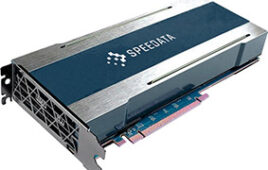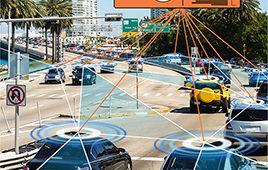 Seventeen teams of citizen inventors from across the globe competed in the 2014 NASA Centennial Challenges Sample Return Robot Challenge from June 11 to 13, 2014, on the campus of Worcester Polytechnic Institute (WPI) in Massachusetts. Prize money of nearly $1.5 million was on the line in this third running of the challenge.
Seventeen teams of citizen inventors from across the globe competed in the 2014 NASA Centennial Challenges Sample Return Robot Challenge from June 11 to 13, 2014, on the campus of Worcester Polytechnic Institute (WPI) in Massachusetts. Prize money of nearly $1.5 million was on the line in this third running of the challenge.
Teams were required to demonstrate a robot that can locate and collect samples from a wide and varied terrain, operating without human control. The objective of the challenge was to encourage innovations in autonomous navigation and robotics technologies.
The challenge was divided into two levels of competition. For a robot to complete Level 1 successfully, it had to leave a starting platform in search of a sample that was previously identified in the robot’s onboard computer. The robot had to autonomously return one undamaged sample to its starting platform within a 30-minute time limit. Only teams that completed Level 1 were allowed to compete in Level 2.
NASA awarded $5,000 to the Mountaineers, first-time competitors from West Virginia University, Morgantown. Students on the team successfully completed Level 1 of the Sample Return Robot Challenge, a part of NASA’s Centennial Challenges prize program.
“It’s exciting to see such innovative approaches to solving tough technical questions,” said NASA Chief Technologist David Miller as he awarded the check. “These challenges are intentionally difficult so that we can make leaps, not steps, in progressing the technology. We are proud that the Mountaineers have risen to the occasion.”
“It’s time to ‘Hail West Virginia’ for their win today as they demonstrated their Mountaineer spirit,” said Deputy Associate Administrator for Space Technology Dorothy Rasco. “NASA’s uses prizes to mobilize American ingenuity while advancing the space technologies that will support our missions of tomorrow. We benefit from the novel approaches these innovators bring to the challenge — solutions that complement our Space Technology Mission Directorate’s efforts to rapidly develop, demonstrate and infuse revolutionary, high-payoff technologies of benefit to NASA and the nation.”
Team members are: graduate students Kyle Lassak, Alexander Hypes, Tanmay Mandal, Ghassan Al-Sinbol and Tim Godisart; and undergraduates Lucas Behrens, Nicholas Ohi, Ryan Watson, Scott Harper and Jared Strader; and team advisors Yu Gu, Powsiri Klinkhachorn and Marvin Cheng.
The team plans to donate the prize money to West Virginia University to be used as seed funds in the development of a scholarship that promotes robotics education and research at the University.
Robotics teams from the United States, Canada, Mexico and Estonia competed for $1.5 million in prize money at the 2014 NASA Centennial Challenges Sample Return Robot competition this June. Although seventeen teams arrived to compete, only 14 passed inspection and took to the challenge field.
NASA’s Centennial Challenges program does not award funds to competitors unless the challenge objectives have been met. This assures desired results are gained before government funds are paid.
Due to the difficulty and complexity of the Centennial Challenges, many are only won after teams have had several years to fine-tune their entries.
“I am thrilled to see another Level 1 success, especially from a first-year team,” said Sam Ortega, program manager for the Centennial Challenges Program. “We set the bar high for NASA challenges, and we anticipate that a challenge will take several repetitions in order to develop technology capable of winning.
Team Survey from Los Angeles completed Level 1 at the 2013 competition and was the only team to compete at Level 2 in 2014. Level 2 requires competition robots to autonomously return at least two undamaged samples, including a pre-cached sample, to its starting platform within a two-hour time limit.
Samples were categorized as easy, intermediate and hard based on the complexity of their shape, size and design, with higher point values given for samples classified as hard. Samples ranged in shape and size from rectangular (like a shoe box) or round (like a tennis ball). Prize awards ranged from $100,000 to $1.5 million depending on the number of points scored.
Returning teams this year included: Survey; Wunderkammer Laboratory of Topanga, California; Intrepid Systems of Lynnwood, Washington; the University of Waterloo of Ontario, Canada; AERO of Worcester, Massachusetts; Fetch of Alexandria, Virginia; Kuukulgur of Estonia; Middleman of Dunedin, Florida; and the University of California Santa Cruz Autonomous Rover Team.
New teams entering the competition this year were: Cephal of Pittsburgh; Formicarum of Worcester, Massachusetts; the West Virginia University Mountaineers of Morgantown; the Oregon State University Mars Rover Team of Corvallis; the Retrievers of Schenectady, New York; RPI Rock Raiders of Rensselaer Polytechnic Institute in Troy, New York; Stellar Automation Systems of Marietta, Georgia; Sourcerors of Pittsburgh; and Lunambotics of Mexico City.
The challenge began on the WPI campus June11, and concluded with the TouchTomorrow technology festival hosted by WPI on June 14. The festival, which was open to the public, showcased the teams and robots as well as NASA and WPI exhibits in science, robotics and space technology.
The Centennial Challenges program is part of NASA’s Space Technology Mission Directorate, which is innovating, developing, testing and flying hardware for use in NASA’s future missions.
Read more about NASA’s Centennial Challenges and Space Technology Mission Directorate.




